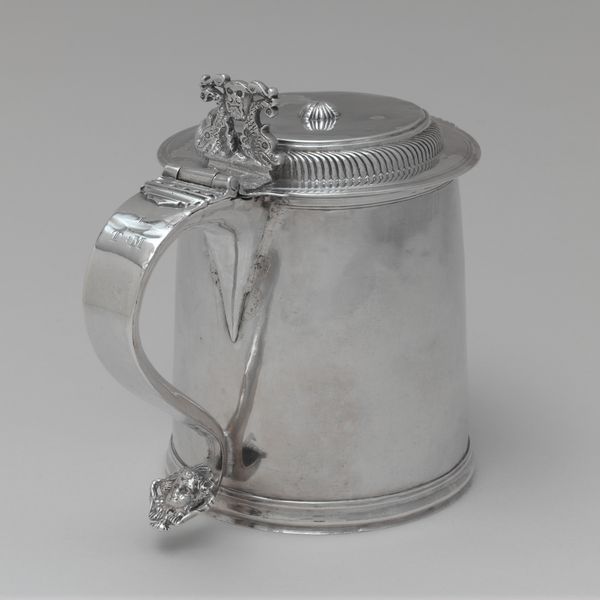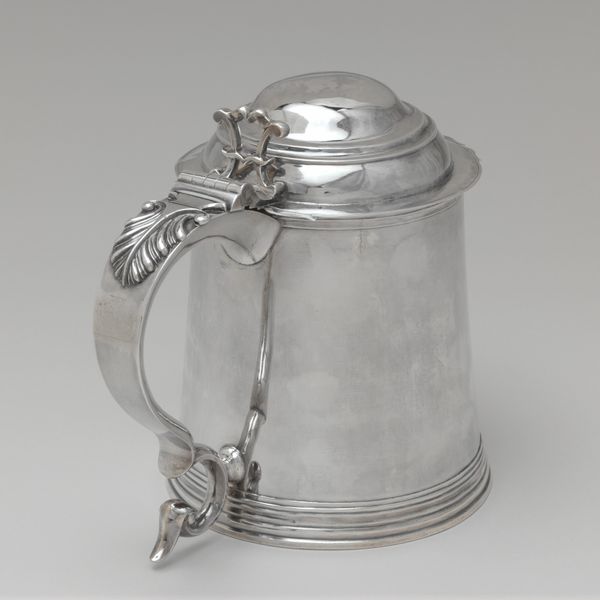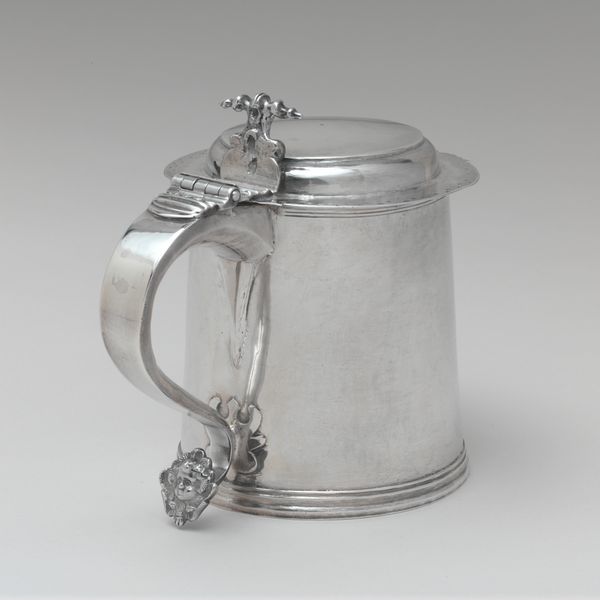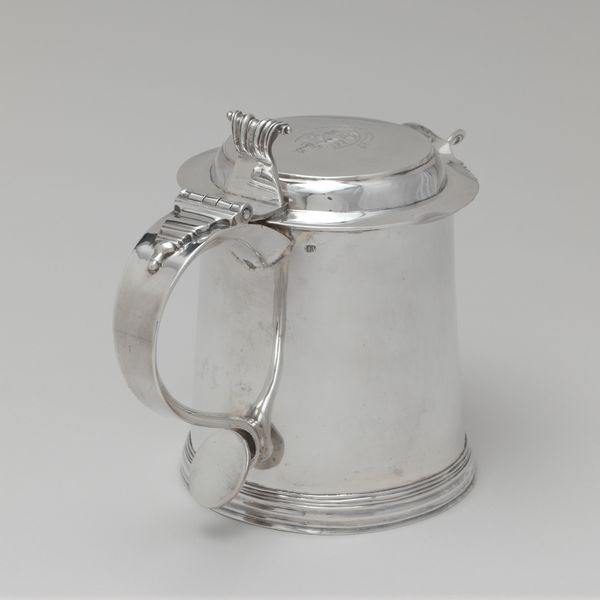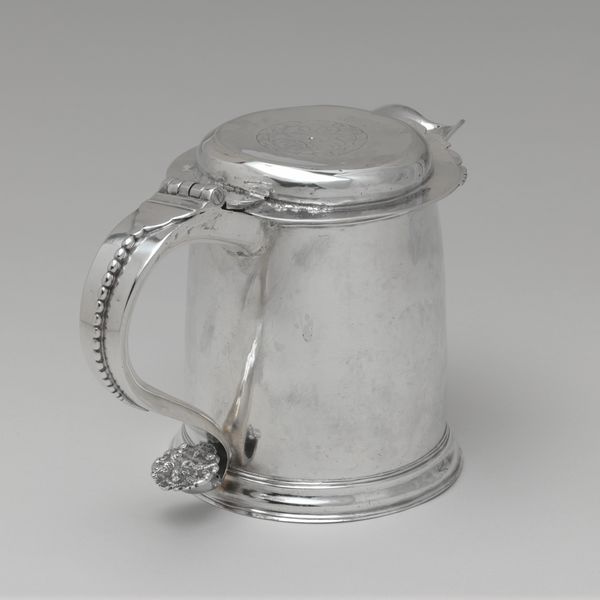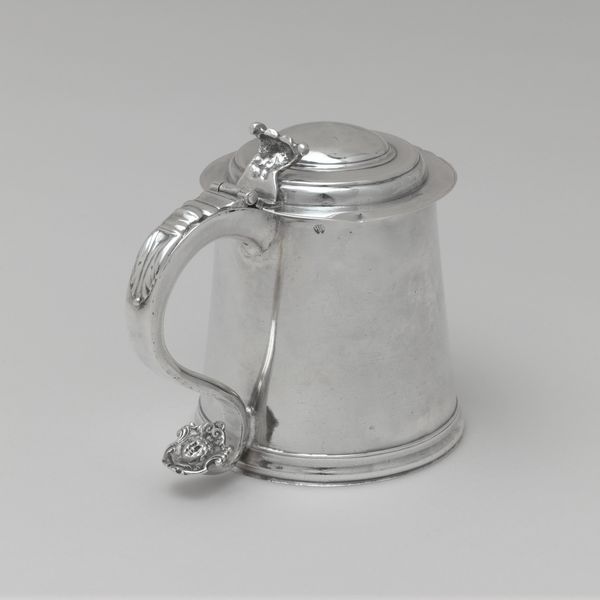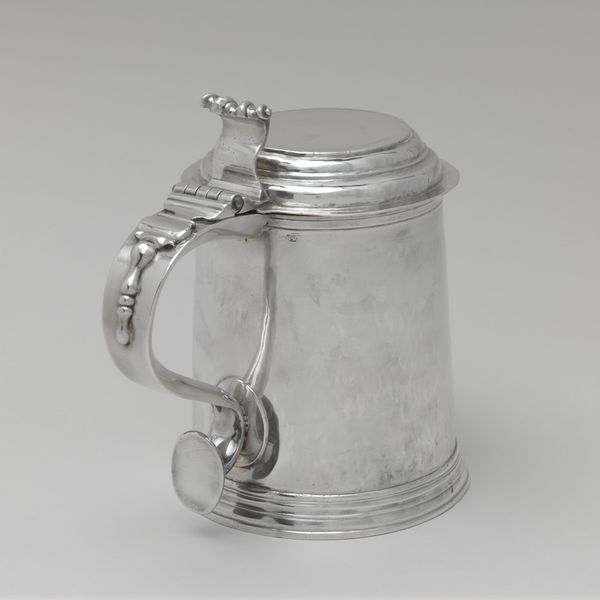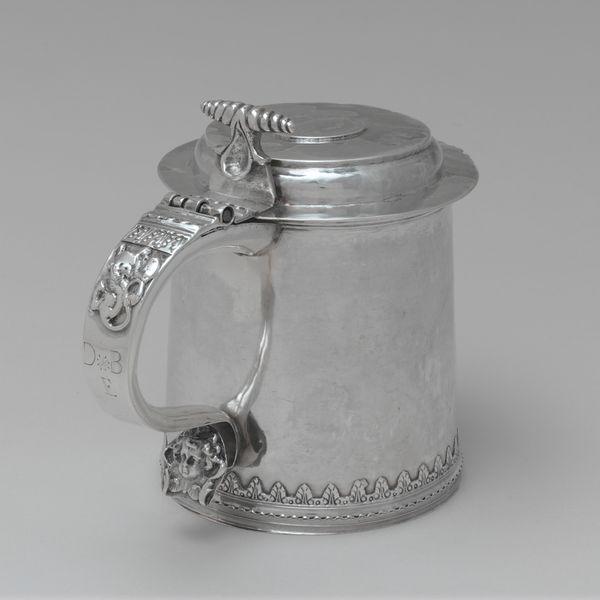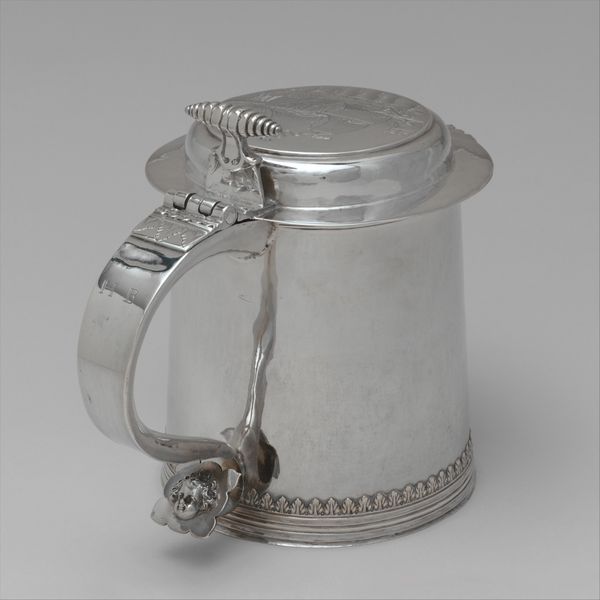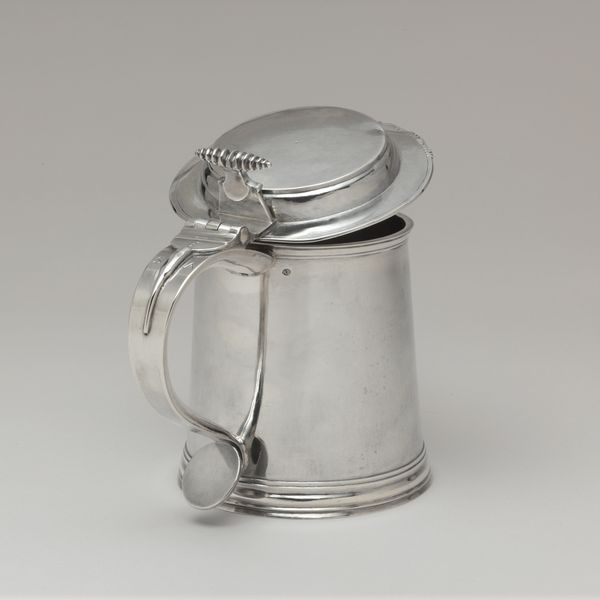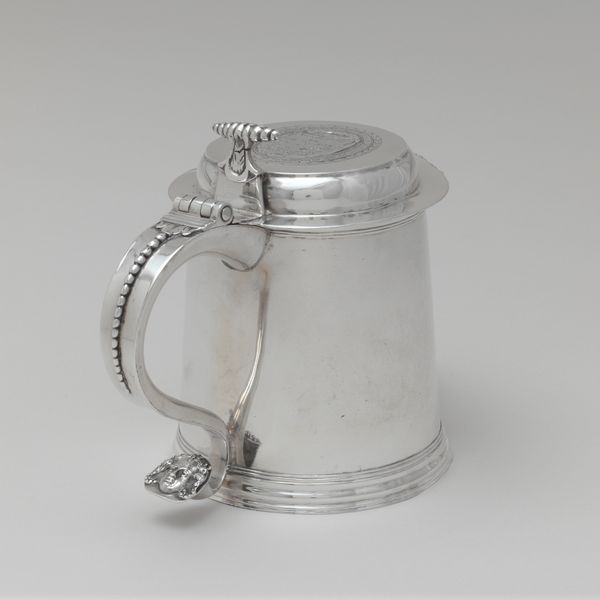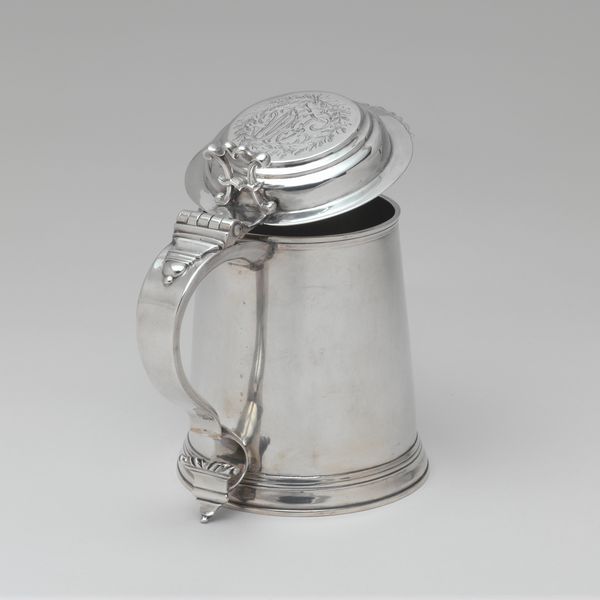
silver, metal, sculpture
#
silver
#
baroque
#
metal
#
sculpture
#
united-states
#
decorative-art
Dimensions: Overall: 6 15/16 x 8 1/16 in. (17.6 x 20.5 cm); 26 oz. 7 dwt. (819.3 g) Lip: Diam. 4 5/16 in. (11 cm) Base: Diam. 5 1/8 in. (13 cm)
Copyright: Public Domain
Curator: Let's discuss this beautiful silver tankard, crafted by Jeremiah Dummer between 1690 and 1705. It’s part of the decorative arts collection here. Editor: It looks…sturdy. Almost imposing, for a drinking vessel. The plain surface makes it feel austere, despite the flourishes on the handle. Curator: Dummer was a key figure. He trained a whole generation of early American silversmiths. This tankard isn’t just functional; it's emblematic of colonial craftsmanship and economic power structures of that era. Who had access to silver like this and what did it represent? Editor: I immediately zoom in on how it's made. See how the body is raised, probably hammered from a single sheet of silver? Think about the sheer labor involved. How many hours did a silversmith put into this? What were their working conditions? We have to acknowledge those skills and processes that are mostly invisible today. Curator: Absolutely. The handle, with that small grotesque mask at the base and the finial on the lid, speaks volumes about colonial aspirations and connections to European styles. These references position the owner in a complex transatlantic identity and economy. Editor: But consider this: silver objects like these also participated in systems of global trade and exploitation. Silver mined under duress in South America was transported across oceans, and shaped by colonial silversmiths using skills extracted from enslaved African metalworkers. We need to look at who owns these pieces and how this impacted wealth distribution within colonial societies. Curator: Precisely. By viewing objects like this tankard through the lens of social and postcolonial theory, we can question not just their aesthetic appeal but the stories they silently hold, unveiling layers of power and social history that mainstream accounts frequently overlook. It’s about challenging dominant narratives. Editor: It brings to mind the politics of display in museums. Who decides what stories are told and what histories are foregrounded through objects like this? Do displays accurately reflect labor dynamics of past? By critiquing museum practices and highlighting hidden labour and obscured social structures, we begin to unearth complicated legacies. Curator: This tankard then, far from being a simple vessel, emerges as a focal point for conversations around social identity and material culture in early America. It embodies so much beyond its shiny surface. Editor: Yes. Examining objects as part of wider socio-economic-historical processes encourages active questioning and demands accountability of what we value today.
Comments
No comments
Be the first to comment and join the conversation on the ultimate creative platform.
